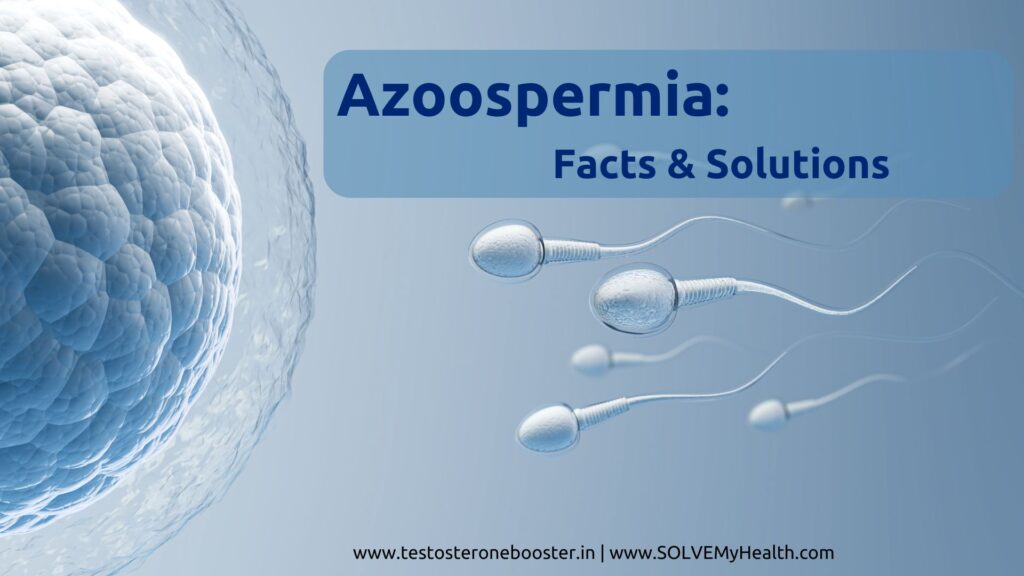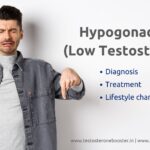Azoospermia is a condition where there is no measurable sperm in a man’s ejaculate. This medical issue, often referred to as “no sperm count,” significantly impacts male fertility and can be a major obstacle for couples attempting to conceive. While some men are born with this condition, others may develop it later in life due to various factors. The causes can vary from hormonal imbalances to structural blockages in the reproductive system. Fortunately, with advancements in medical science, many forms of azoospermia are treatable.
What Is Azoospermia?
Azoospermia is when either the sperm production is absent or when the sperm fails to travel through the reproductive system. Either way, this results in the semen not containing enough sperm, resulting in azoospermia. It affects approximately 1% of men and accounts for nearly 10% of male infertility (infertility affecting men). Azoospermia often goes unnoticed due to a lack of visible symptoms; it is usually diagnosed during medical tests, when a couple experiences difficulty conceiving.
Also Read: Male Sexual Health – Physical, Mental and Lifestyle Connection
Some men with azoospermia may also notice symptoms related to its underlying causes, such as:
- Low libido or sexual dysfunction.
- Hormonal imbalances and related fatigue
- Reduced secondary sexual characteristics due to hormonal imbalances
- Physical abnormalities, such as lumps in the testicular area or undescended testicles.
Early diagnosis and treatment are essential for improving the chances of successful treatment of azospermia.
Types of Azoospermia
Azoospermia is categorized into two main types, each defined by its underlying cause:
1. Obstructive Azoospermia
Obstructive Azoospermia occurs due to blockages in the reproductive tract that prevent sperm from exiting the body. The blockages can occur in the epididymis, vas deferens, or ejaculatory ducts. Common causes for obstructive azoospermia include –
- Trauma or injury to the testicles.
- Infections, such as epididymitis or prostatitis, leading to scarring.
- Previous surgeries in the pelvic or groin area, including hernia repairs.
- Genetic conditions like cystic fibrosis, which may result in missing vas deferens or thickened secretions.
Issues in sperm delivery or ejaculation can also happen due to conditions such as retrograde ejaculation, ejaculatory duct issues, or nerve damage leading to anejaculation – a condition called post-testicular azoospermia
2. Non-Obstructive Azoospermia
As the name says, this type of azoospermia occurs due to reasons that are other than obstruction or blockages that prevents the sperm from exiting the body. This could happen either due to impaired testicular function, genetic or hormonal issues
- Genetic abnormalities: Conditions such as Klinefelter’s syndrome or Y chromosome microdeletions can disrupt sperm production.
- Varicoceles: Enlarged veins in the scrotum can increase temperature and impair testicular function.
- Toxins and environmental exposure: Prolonged exposure to radiation, pesticides, or heavy metals can harm sperm production.
- Medication effects: Some chemotherapy drugs, anabolic steroids, and antibiotics can negatively affect testicular function.
- Endocrine disorders: Conditions like low testosterone levels (hypogonadism) or high prolactin levels (hyperprolactinemia) can suppress sperm production. Too much or too little of the hormones that regulate male fertility, such as luteinizing hormone (LH), follicle-stimulating hormone (FSH), and testosterone, also can lead to azoospermia. For example, injectable testosterone commonly used by body builders to build muscles can stop sperm production.
- Pituitary gland disorders: Tumors or damage to the pituitary gland can disrupt the hormonal signals required for sperm production.
- Chemotherapy or radiation therapy: Treatments for cancer can interfere with the hypothalamus-pituitary-testicular axis, leading to reduced fertility.
Diagnosing Azoospermia
Diagnosing azoospermia involves several evaluations to identify the underlying cause and guide treatment. The process typically begins with a semen analysis, performed twice on different occasions, to confirm the absence of sperm in the ejaculate. This test also checks the semen’s volume, pH, and the presence of cells that may indicate infection or inflammation. A detailed medical history is then reviewed, including questions about childhood illnesses like mumps, surgeries, trauma, or infections in the reproductive area, use of medications or anabolic steroids, and family history of infertility or genetic disorders.
Also Read: Erectile Dysfunction (ED) – Causes, Treatment & Lifestyle Modifications
Physical examination that focuses on the size and texture of the testicles, the presence of varicoceles, and signs of hormonal imbalances like gynecomastia or reduced facial hair are also part of azoospermia diagnosis. Blood tests may be conducted to measure levels of hormones including testosterone, follicle-stimulating hormone (FSH), luteinizing hormone (LH), and prolactin, to identify endocrine issues. Imaging tests, like scrotal ultrasound or MRI, also may be required to detect structural abnormalities, varicoceles, or blockages. Genetic testing is yet another important step to identify inherited conditions such as Klinefelter’s syndrome or Y chromosome deletions that could impair sperm production.
Treatment of Azoospermia
Treatment for azoospermia depends on its type and underlying cause, with options ranging from surgical procedures to lifestyle changes. Each approach has its own reasons, and are meant to address specific issues affecting sperm production or sperm delivery.
Surgical Interventions are commonly used for cases of obstructive azoospermia, where blockages in the reproductive tract prevent sperm from reaching the ejaculate. Procedures like vasectomy reversal reconnect the vas deferens, restoring the pathway for sperm to exit the testes. For men with blockages in the epididymis, microsurgical epididymal sperm aspiration (MESA) allows direct extraction of sperm for use in assisted reproductive techniques. Similarly, an ejaculatory duct resection can remove blockages in the ducts, enabling the normal release of sperm. These surgical approaches are effective when the underlying issue is physical obstruction.
Also Read: How does an erection occur?
Hormonal therapy is used to address azoospermia caused by hormonal imbalances. Treatments such as testosterone replacement therapy (TRT) can normalize testosterone levels, helping improve overall reproductive function. For cases of pre-testicular azoospermia, where the pituitary gland fails to stimulate sperm production, FSH and hCG injections are administered to encourage the testicles to produce sperm. These therapies are particularly effective in men with treatable endocrine disorders.
When natural conception is not possible, assisted reproductive techniques (ART) provide alternative solutions. In procedures like testicular sperm extraction (TESE), sperm is retrieved directly from the testes for use in fertility treatments. This is often combined with intracytoplasmic sperm injection (ICSI), where a single sperm is injected into an egg to facilitate fertilization during in vitro fertilization (IVF). In IVF, the sperm fertilizes eggs outside the body, creating embryos that are then implanted into the uterus. ART is an essential option for couples facing severe male infertility.
Lifestyle modifications play a critical role in improving sperm production and overall reproductive health. Reducing alcohol consumption and avoiding recreational drugs can enhance sperm quality, while minimizing heat exposure, such as avoiding hot tubs or keeping laptops off the lap, helps maintain optimal testicular temperature for sperm production. A nutrient-rich diet that includes antioxidants and essential vitamins supports reproductive health, and regular, moderate exercise improves overall well-being without the risk of overexertion. These changes are particularly beneficial for men with lifestyle-related infertility.
Join us for assisted lifestyle modifications – Lifestyle Programs by SOLVEMyHealth
Sleep is vital for overall health, playing a critical role in reducing inflammation and supporting the body’s natural repair processes. Quality sleep helps regulate hormones, including those related to stress and reproduction, which are essential for optimal health and fertility. Inadequate sleep disrupts these hormonal balances, increasing inflammation and potentially impairing reproductive health.
Improve Sleep with non habit forming, Melatonin Oral Spray of SOLVE
Equally important is stress management, as chronic stress elevates cortisol levels, which can suppress immune function, increase inflammation, and negatively affect fertility. Incorporating relaxation techniques, mindfulness, and regular exercise not only helps manage stress but also complements the restorative benefits of sleep, creating a foundation for improved health and well-being.
Azoospermia Prevention
Although genetic factors contributing to azoospermia cannot be controlled, certain lifestyle changes can help reduce the risk of azoospermia. Avoiding exposure to harmful chemicals and radiation is important, as these can negatively impact sperm production. Wearing protective gear during activities that pose a risk of testicular injury can prevent trauma that could affect fertility. Additionally, being cautious with medications and anabolic steroids known to impair fertility is important, and consulting a healthcare professional before starting or discontinuing such medications can help safeguard reproductive health.
Managing Azoospermia
Addressing azoospermia requires a combination of medical expertise, personalised care, and proactive health management. By understanding the causes, types, and treatment options, men can take informed steps toward overcoming fertility challenges. Alongside medical treatments, incorporating supportive solutions like VitalBoost for Men can be a valuable addition. This scientifically designed supplement enhances male reproductive health, boosts vitality, and provides essential nutrients for overall well-being.
Consult with your healthcare provider to explore the best options for your journey toward parenthood and improved health. With advancements in diagnostics, treatments, and supportive care, azoospermia no longer needs to be a barrier to achieving reproductive goals.








